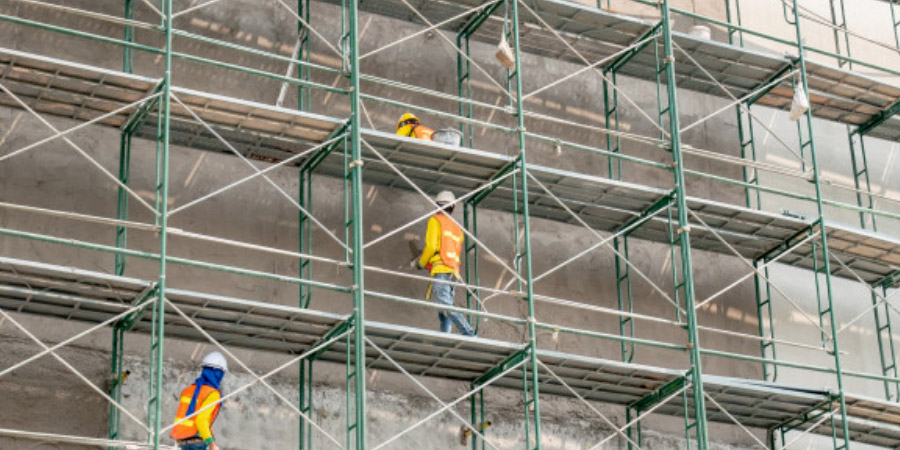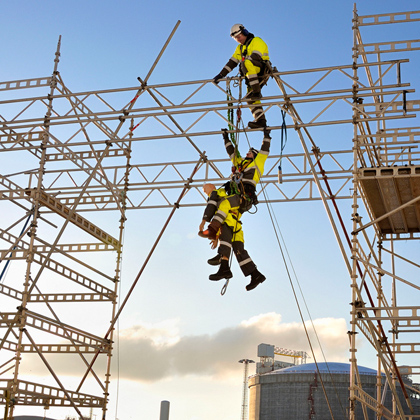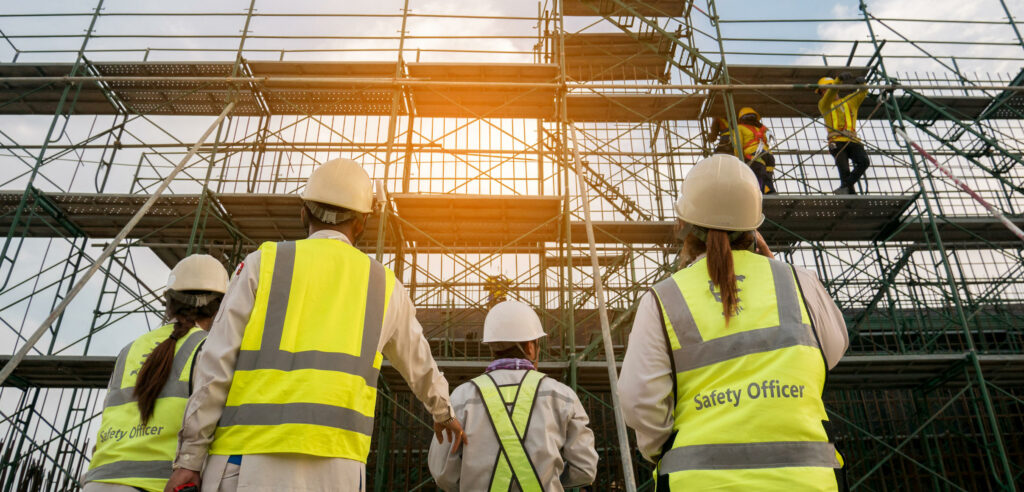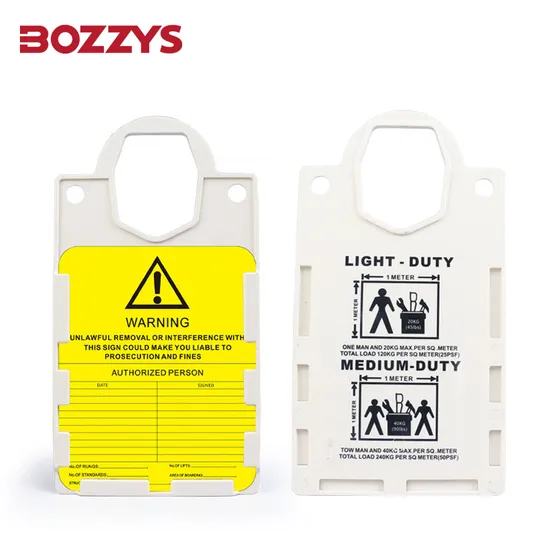Scaffolding is a temporary structure. It supports workers and materials during construction.
In Saudi Arabia, scaffolding plays a crucial role in the building industry. It is essential for both new constructions and renovations. The country’s rapid development means that safe and effective scaffolding is always in demand. Understanding scaffolding in Saudi Arabia involves looking at its types, materials, and safety standards.
With towering skyscrapers and complex infrastructures, the need for reliable scaffolding solutions is clear. This introduction will explore what scaffolding is, its importance, and how it is used in Saudi Arabia. Discover how this vital structure supports the Kingdom’s ambitious architectural projects.

Credit: www.arabianspar.com
Introduction To Scaffolding
Scaffolding is a temporary structure used in construction projects. It supports workers and materials during the building process. In Saudi Arabia, scaffolding plays a crucial role due to the rapid development in the construction industry. Understanding the basics and importance of scaffolding can help ensure safety and efficiency on construction sites.
Basics Of Scaffolding
Scaffolding consists of various components like tubes, couplers, and boards. These elements come together to create a stable platform for workers. There are different types of scaffolding, each suited for specific tasks.
- Supported Scaffolding: This is the most common type. It is built from the ground up.
- Suspended Scaffolding: It hangs from buildings using ropes or other non-rigid means.
- Rolling Scaffolding: This type has wheels for easy movement across a site.
Proper assembly and maintenance are critical. They prevent accidents and ensure the structure remains stable.
Importance In Construction
Scaffolding is vital in the construction industry. It provides a safe platform for workers at height. This helps in the prevention of falls, which are a leading cause of injury on construction sites.
Scaffolding also allows for the efficient movement of materials. This speeds up the construction process. With the right scaffolding, workers can access hard-to-reach areas. This ensures that every part of a building is properly constructed and maintained.
In Saudi Arabia, where construction projects are often large-scale, scaffolding is indispensable. It supports the ambitious architectural designs that are becoming the hallmark of the region.
Types Of Scaffolding
Scaffolding is essential for construction projects in Saudi Arabia. It provides workers with a safe platform to perform tasks at height. Different types of scaffolding suit various construction needs. Here, we explore the main types of scaffolding used in Saudi Arabia.
Supported Scaffolding
Supported scaffolding is the most common type. It is built from the ground up and provides a stable platform. This scaffolding is ideal for tasks requiring heavy loads or multiple workers. It consists of a frame, base, and platform.
| Component | Description |
|---|---|
| Frame | Made of steel or aluminum, provides structure. |
| Base | Supports the frame, ensuring stability. |
| Platform | Where workers stand, made of planks or metal decking. |
Supported scaffolding is easy to assemble. It can be adjusted to various heights. It’s suitable for long-term projects.
Suspended Scaffolding
Suspended scaffolding hangs from the top of a building. It is ideal for tasks like window cleaning or painting. This type of scaffolding provides flexibility in movement. It is especially useful for tall buildings.
- Consists of ropes, pulleys, and a platform.
- Can be raised or lowered as needed.
- Often used for maintenance and repair work.
Suspended scaffolding requires careful setup. It is crucial to ensure all components are secure. Safety is a top priority.
Materials Used
Scaffolding is a crucial component in construction. In Saudi Arabia, various materials are used to build strong and reliable scaffolding structures. The most common materials include steel and aluminum. Each has its benefits and drawbacks. Let’s explore the different types of scaffolding materials.
Steel Scaffolding
Steel scaffolding is widely used in Saudi Arabia due to its strength and durability. It is capable of supporting heavy loads and is resistant to harsh weather conditions. Steel scaffolding is ideal for large-scale construction projects.
The advantages of steel scaffolding are:
- High strength and stability
- Long-lasting and durable
- Resistant to extreme temperatures
Steel scaffolding, although strong, can be heavy and hard to move. It requires more effort and time during installation and dismantling.
Aluminum Scaffolding
Aluminum scaffolding is another popular choice. It is much lighter than steel, making it easier to transport and assemble. This type of scaffolding is often used in smaller construction projects or where mobility is a key factor.
The advantages of aluminum scaffolding are:
- Lightweight and easy to handle
- Quick to assemble and disassemble
- Corrosion-resistant
Though aluminum scaffolding is lighter, it may not support as much weight as steel. It is better suited for projects that require flexibility and quick setup.
Safety Standards
Safety standards are crucial in the construction industry, especially in scaffolding. In Saudi Arabia, strict regulations ensure the safety of workers and the stability of structures. Adhering to these standards helps prevent accidents and injuries on construction sites.
Regulations In Saudi Arabia
The Saudi government enforces strict scaffolding regulations. These regulations ensure safe practices on all construction sites. Compliance with these rules is mandatory for all companies.
Regular inspections are carried out to ensure adherence. These inspections help identify any safety hazards. Non-compliance can lead to heavy fines and penalties.
Safety Best Practices
Using quality materials is essential for safe scaffolding. Ensure all components are checked before use. Avoid using damaged or worn-out parts.
Proper training for workers is also vital. Educate them on safe scaffolding practices. Regular safety drills help reinforce these practices.
Ensure a stable base for the scaffolding. Use proper bracing and support. Regularly check for stability and adjust as needed.
Always use safety gear. Helmets, harnesses, and gloves are mandatory. This gear protects workers from potential injuries.
Installation Process
The installation process of scaffolding in Saudi Arabia is crucial for ensuring safety and efficiency. Proper installation ensures stability and supports construction workers and materials. Let’s explore the steps involved in the installation process.
Site Preparation
Before starting the installation, the site needs thorough preparation. Clear the area of debris and obstacles to create a safe workspace. Ensure the ground is level and firm to support the scaffolding structure. Mark the area where the scaffolding will be erected. This helps in accurate placement and alignment.
Assembly Steps
Begin by laying the base plates on the prepared ground. Connect the vertical standards to the base plates. Ensure they are upright and secure. Attach the horizontal ledgers to the vertical standards. This forms the basic frame of the scaffolding. Add the diagonal braces to stabilize the structure. These prevent swaying and increase rigidity.
Install the working platforms at the required heights. Ensure these platforms are strong enough to support workers and materials. Use guardrails and toe boards to enhance safety. These prevent falls and accidents. Finally, inspect the entire scaffolding structure. Ensure all connections are secure and there are no loose parts. Regular inspections during use are essential to maintain safety.

Credit: www.petropanenc.com
Inspection And Maintenance
Inspection and maintenance of scaffolding in Saudi Arabia are critical for safety. Regular checks ensure the structure remains secure and functional. Proper maintenance extends the life of the scaffolding and prevents accidents.
Regular Inspections
Regular inspections are essential for scaffolding safety. Inspect scaffolding before each use and after any alterations. Look for signs of wear, damage, or corrosion. Ensure all components are correctly installed and secure. Make sure the base is stable and the scaffolding is level.
Maintenance Tips
Proper maintenance keeps scaffolding safe and extends its lifespan. Clean scaffolding regularly to remove debris and dirt. Check for rust and apply anti-rust treatments as needed. Tighten any loose bolts and replace damaged parts immediately. Store scaffolding in a dry, covered area to protect it from weather elements. Train workers on proper use and care of scaffolding to prevent damage.
Cost Considerations
Cost considerations are crucial for scaffolding projects in Saudi Arabia. Knowing the factors that affect costs helps in planning and budgeting effectively. This section will discuss various cost factors and provide helpful budgeting tips.
Factors Affecting Cost
Several factors influence scaffolding costs in Saudi Arabia. The first factor is the type of scaffolding used. Different projects require different types of scaffolding, and each type has a different cost. Another factor is the height and size of the structure. Taller and larger structures need more materials and labor, which increases costs.
Location also affects costs. Urban areas may have higher costs due to labor and material availability. Remote locations may incur additional transportation costs. The duration of the project is another factor. Longer projects require scaffolding to be in place for extended periods, adding to the cost.
Budgeting Tips
Proper budgeting can save money on scaffolding projects. Start by getting multiple quotes from different suppliers. This helps in comparing prices and choosing the best option. Consider renting scaffolding instead of buying it. Renting can be more cost-effective for short-term projects.
Plan the project timeline carefully. Avoid delays to reduce the rental period. Keep safety in mind. Investing in quality materials may cost more upfront but reduces the risk of accidents. Accidents can lead to additional costs and project delays.
Regularly inspect the scaffolding. Regular inspections help identify issues early, preventing costly repairs. Train workers on proper scaffolding use. Trained workers are less likely to cause damage, reducing maintenance costs.

Credit: www.facebook.com
Common Challenges
Scaffolding is essential for construction projects in Saudi Arabia. Yet, it comes with its own set of challenges. Companies need to be aware of these issues to ensure safety and efficiency. Below are some of the common challenges faced in scaffolding projects.
Weather Conditions
Saudi Arabia has extreme weather conditions. High temperatures and strong winds can impact scaffolding stability. Heat can cause materials to expand, leading to structural issues. Workers also face health risks due to heat exposure. In addition, sudden sandstorms can reduce visibility and increase hazards.
Logistical Issues
Transporting scaffolding materials to remote areas can be difficult. Poor road conditions and long distances pose challenges. Timely delivery is crucial but often hard to achieve. Storing scaffolding materials safely at the site is another concern. Lack of proper storage can lead to damage or theft.
Technological Advancements
Technological advancements in scaffolding have transformed the construction industry in Saudi Arabia. Modern scaffolding systems now offer improved safety, efficiency, and flexibility. These advancements cater to the growing demand for faster and safer construction methods. With new technologies, scaffolding has become more reliable and user-friendly.
Innovations In Scaffolding
Innovations in scaffolding have streamlined many processes. Lightweight materials like aluminum are now widely used. These materials are strong yet easy to handle. They reduce the risk of accidents and save time during setup and dismantling. Modular scaffolding systems are also gaining popularity. These systems are versatile and can be customized for various projects. They offer better adaptability for complex structures.
Automation is another significant innovation. Robotic scaffolding can assemble and disassemble itself. This reduces the need for manual labor. It speeds up the construction process and minimizes human error. Smart sensors are also integrated into scaffolding systems. These sensors monitor structural integrity and alert workers to potential issues. This ensures a safer working environment.
Future Trends
Future trends in scaffolding point towards even greater technological integration. Virtual Reality (VR) and Augmented Reality (AR) are expected to play a big role. These technologies can provide virtual walkthroughs of scaffolding setups. This helps in planning and identifying potential issues before actual construction begins. It enhances precision and reduces delays.
Another trend is the use of drones. Drones can inspect scaffolding from angles that are hard to reach. They provide real-time data and images. This helps in maintaining the scaffolding and ensuring safety. Drones also reduce the need for manual inspections, saving time and effort.
Eco-friendly scaffolding materials are likely to emerge. As the world moves towards sustainability, the construction industry will follow. Scaffolding made from recyclable and biodegradable materials will become more common. This will help reduce the environmental impact of construction activities.
Case Studies In Saudi Arabia
Scaffolding plays a crucial role in construction projects. In Saudi Arabia, several case studies highlight the importance of scaffolding. These studies offer valuable insights into successful projects and lessons learned.
Successful Projects
One notable project is the King Abdullah Financial District. This project required extensive scaffolding to support high-rise buildings. Engineers used advanced scaffolding techniques to ensure safety and efficiency. The project was completed on time, showcasing the effectiveness of well-planned scaffolding.
Another successful example is the expansion of the Grand Mosque in Mecca. This project needed massive scaffolding structures. The complexity and scale were unparalleled. Effective scaffolding ensured the safety of workers and maintained the project’s timeline.
Lessons Learned
In these projects, several lessons were learned. Proper planning and material selection are critical. Using high-quality materials reduces risks. Regular inspections prevent accidents and delays.
Training workers is also essential. Skilled labor ensures scaffolding is erected and dismantled safely. Clear communication among team members improves coordination and efficiency. These lessons contribute to safer and more effective scaffolding practices.
Frequently Asked Questions
What Is Scaffolding Used For?
Scaffolding provides temporary support to construction workers. It allows them to perform tasks safely at height. It’s used in building, maintenance, and repairs.
What Types Of Scaffolding Are There?
There are several types of scaffolding. These include supported scaffolding, suspended scaffolding, and rolling scaffolding. Each type serves different construction needs.
How Safe Is Scaffolding In Saudi Arabia?
Scaffolding safety in Saudi Arabia is regulated strictly. Construction companies must adhere to safety standards. Proper training and equipment ensure worker safety.
What Materials Are Used In Scaffolding?
Scaffolding is made from various materials. Common materials include steel, aluminum, and wood. Each material has its own benefits and uses.
Conclusion
Scaffolding in Saudi Arabia plays a crucial role in construction. It provides support and safety for workers. This system helps to build structures efficiently. Understanding its importance ensures safer work environments. Proper use of scaffolding increases productivity. Always prioritize safety and follow regulations.
Skilled workers make a big difference. With the right knowledge, scaffolding can be very effective. Keep learning and stay informed. Your projects will benefit greatly.


